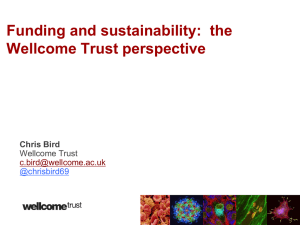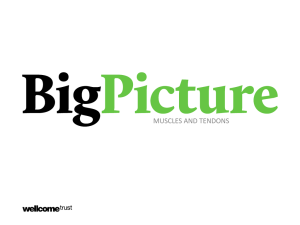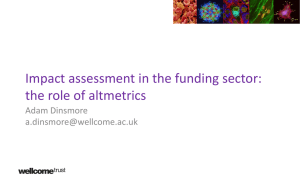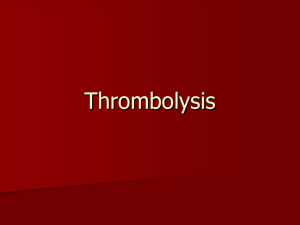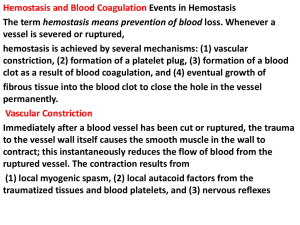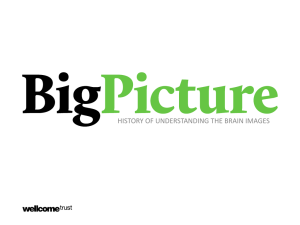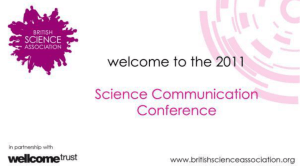Haemoglobin and blood images
advertisement
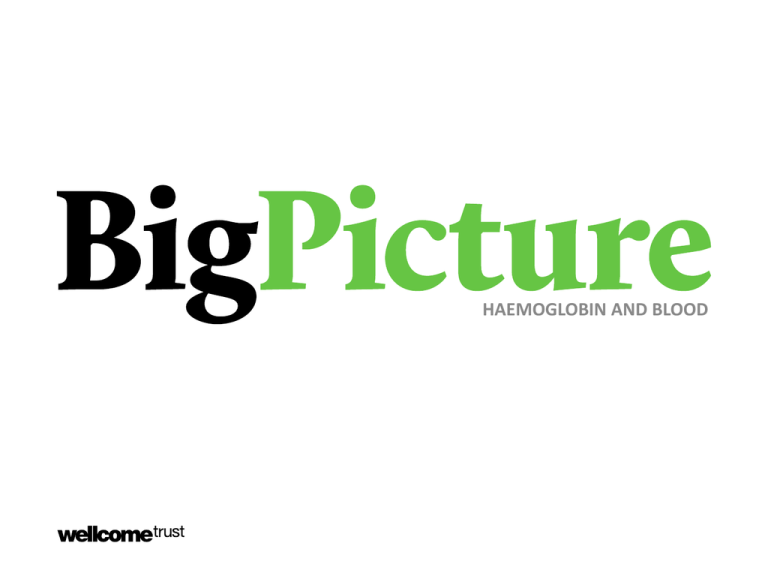
HAEMOGLOBIN AND BLOOD Red blood cells This image shows red blood cells, clearly displaying their biconcave disc shape. Credit: Annie Cavanagh, Wellcome Images. Blood bag A laboratory technician holding a blood bag that contains group A, Rh-positive blood ready for transfusion. Credit: Wellcome Library, London BIGPICTUREEDUCATION.COM Sickle-cell anaemia Sickle-cell anaemia is a blood disease that causes the cell to form a characteristic sickle shape. This change in shape affects the cell's ability to carry haemoglobin. This image shows a normal red blood cell (background, coloured red) and red blood cell affected by sickle-cell anaemia (foreground). Credit: EM Unit, UCL Medical School, Royal Free Campus, Wellcome Images BIGPICTUREEDUCATION.COM Sickled and other red blood cells A scanning electron micrograph image of sickled and other red blood cells, shown coloured red. Credit: EM Unit, UCL Medical School, Royal Free Campus, Wellcome Images Molecular model of haemoglobin and sickle cell disease A molecular model of haemoglobin affected by sickle cell disease. Credit: T Blundell and N Campillo, Wellcome Images.. Ruptured blood vessel A colour-enhanced image of red blood cells leaking out of a ruptured blood vessel. This is due to a mutation that causes the blood vessels to be more fragile than normal, leading to an increased rate of haemorrhaging. Credit: Anne Weston, LRI, CRUK, Wellcome Images Colour-enhanced blood clot This image shows many red blood cells and a single white blood cell held together in a meshwork of fibrin (brown). Credit: Anne Weston, LRI, CRUK, Wellcome Images Blood clot on a sticking plaster A scanning electron micrograph image of the underside of a sticking plaster that has been used to treat a razor blade cut. Red blood cells (shown in red) and thin fibres of the protein fibrin (beige) can be seen between the gauze fibres of the plaster (blue-grey). Fibrin is a protein formed from the conversion of clotting factors in the blood; the fibrin fibres trap blood cells and platelets to form a solid clot. This not only prevents further bleeding but also protects the open wound from infection. Credit: Anne Weston, LRI, CRUK, Wellcome Images Blood clot forming over a wound A colour-enhanced scanning electron micrograph image of a blood clot with squamous tissue visible beneath. As a blood clot on a surface injury dries out, it forms a protective scab over the wound, allowing new skin to grow underneath. Credit: David Gregory and Debbie Marshall, Wellcome Images Blood clot A scanning electron microscope image of a blood clot that shows red blood corpuscles and fibrin. Credit: David Gregory and Debbie Marshall, Wellcome Images Blood clot and new cells under fibrin A scanning electron microscope image of blood clot, showing new cells under fibrin clot. Credit: David Gregory and Debbie Marshall, Wellcome Images Fibrin blood clot A scanning electron microscope image of a blood clot, showing new cells under a fibrin clot. Fibrin, which is also called Factor 1a, acts as a mesh and forms blood clots (with platelets) to trap blood cells and prevent further loss of blood as the wound heals. Credit: David Gregory and Debbie Marshall, Wellcome Images Red blood corpuscles, discoid and stimulated platelets A scanning electron microscope image of red blood corpuscles, discoid and stimulated platelets. Credit: David Gregory and Debbie Marshall, Wellcome Images Blood corpuscles in clot A scanning electron micrograph image of red blood corpuscles and a single white blood cell entangled in the fibrin mesh of a clot. Credit: David Gregory and Debbie Marshall, Wellcome Images Image reuse information Images and illustrations • All images, unless otherwise indicated, are from Wellcome Images. • Contemporary images are free to use for educational purposes (they have a Creative Commons Attribution, Non-commercial, No derivatives licence). Please make sure you credit them as we have done on the site; the format is ‘Creator’s name, Wellcome Images’. • Historical images have a Creative Commons Attribution 4.0 licence: they’re free to use in any way as long as they’re credited to ‘Wellcome Library, London’. • Cartoon illustrations are © Glen McBeth. We commission Glen to produce these illustrations for ‘Big Picture’. He is happy for teachers and students to use his illustrations in a classroom setting, but for other uses, permission must be sought. • We source other images from photo libraries such as Science Photo Library, Corbis and iStock and will acknowledge in an image’s credit if this is the case. We do not hold the rights to these images, so if you would like to reproduce them, you will need to contact the photo library directly. • If you’re unsure about whether you can use or republish a piece of content, just get in touch with us at bigpicture@wellcome.ac.uk. 16
